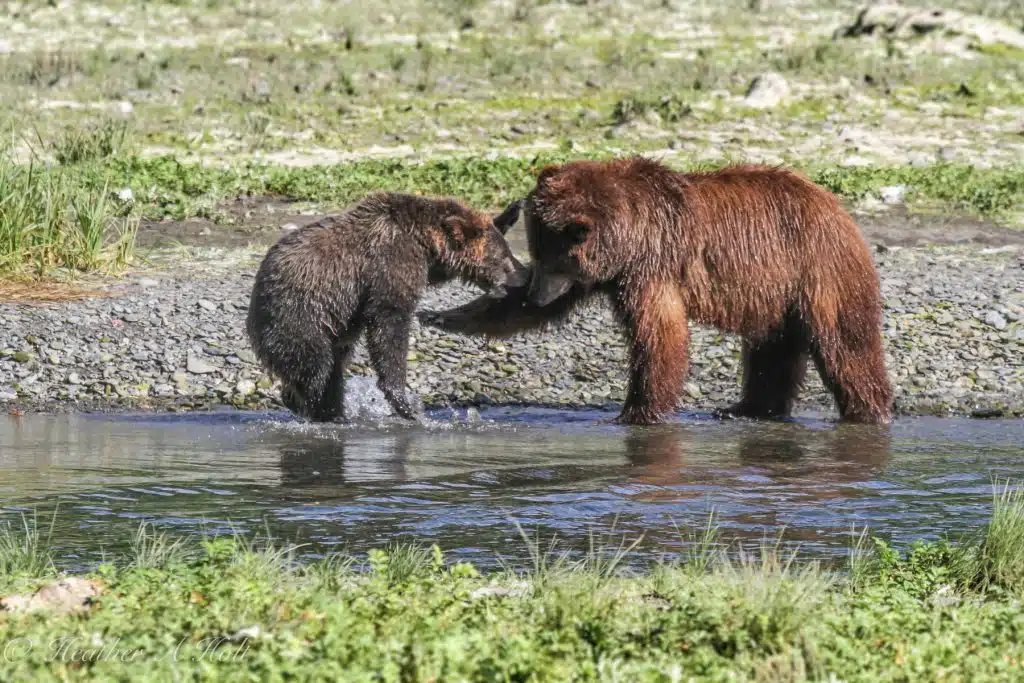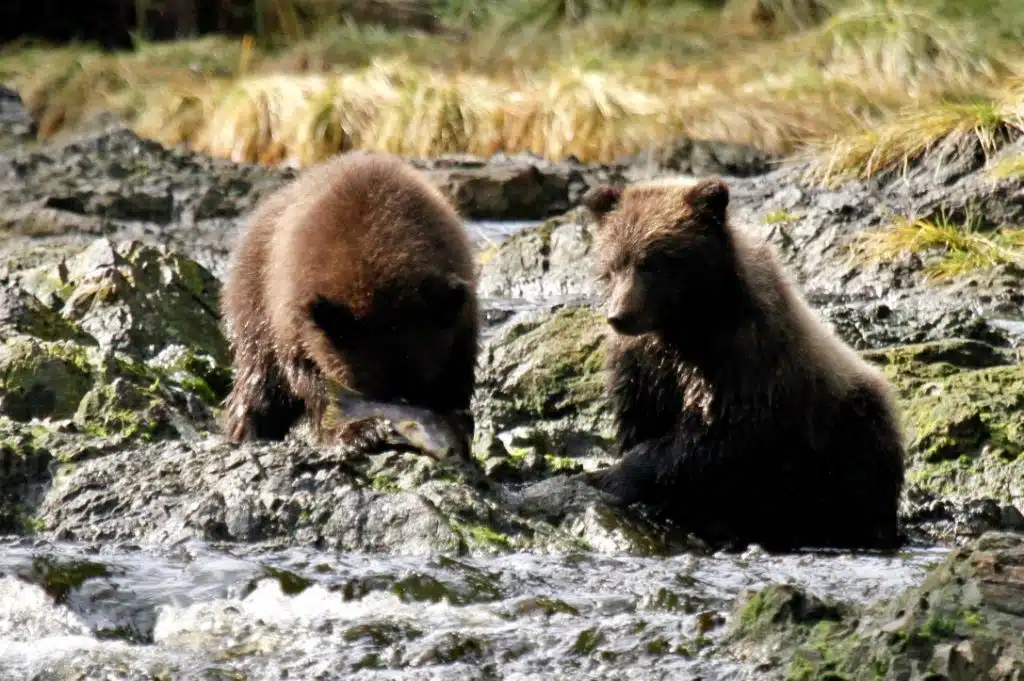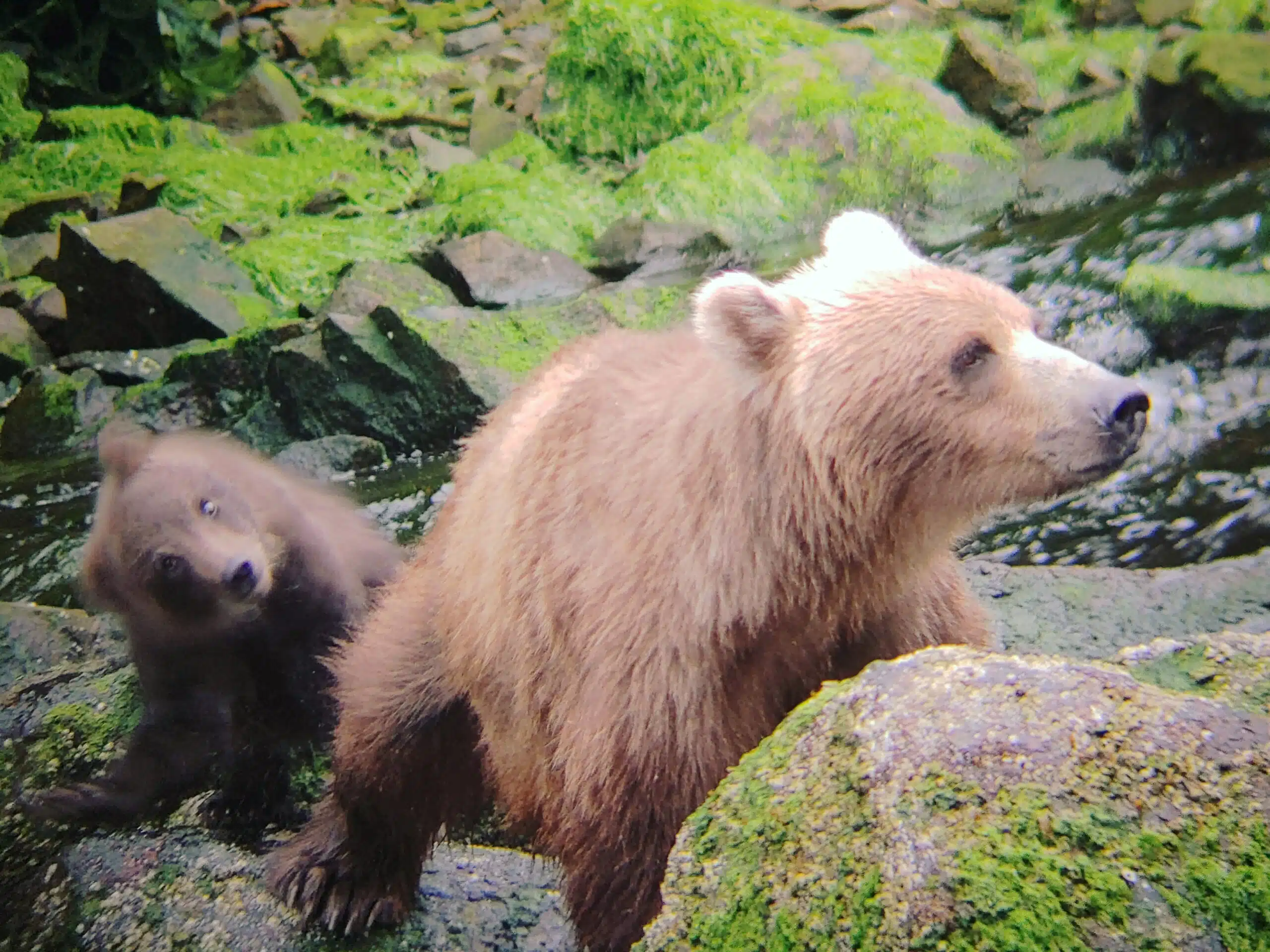Why Bear Cubs Need Playtime (And What It Teaches Us About Our Own Little Cubs)
Picture this: two fluffy brown bear cubs tumbling down a grassy hillside, wrestling and nipping at each other’s ears, their mother watching from nearby. It’s the kind of scene that makes you reach for your camera during a guided bear watching excursions in Juneau. But this adorable display is far more than just Instagram-worthy content—it’s a matter of life and death in Alaska.

The Science Behind the Cuteness
Recent research has revealed something remarkable about brown bear cubs and their playful antics. Cubs who played more during their first summer survived better from their first summer to the end of their second summer. This groundbreaking finding from the University of Alaska represents the first to relate play to survival in wild animals.
What makes this discovery even more fascinating is that researchers controlled for factors you might expect to influence survival—things like the cub’s physical condition, food availability, and maternal characteristics. Even after accounting for these factors, researchers confirmed that survival increases as play increases, independently of these variables.
Nature’s Classroom in Action
During your next guided bear watching adventure, whether at Pack Creek on Admiralty Island or other premier bear-viewing locations throughout Alaska, you might witness something extraordinary. Bears of all ages and often different families might engage in play with each other. In one study from Katmai this even led to a unique social arrangement, researchers observed sister bears with different-aged cubs forming a combined family unit, with the youngsters playing together despite their age differences.
This social play serves multiple purposes. Young bears learn crucial skills through their roughhousing—how to gauge their own strength, read social cues, and navigate the complex dynamics they’ll need as adults. By using a descriptive ethogram for social play in black bears (Henry and Herrero 1974), previously supported for brown bears (Fagen and Fagen 2004, 2009), we were able to confirm that bears were conducting play behaviour in these scenarios.

A Universal Language of Learning
What’s particularly striking about bear cub play—something you’ll notice on Juneau wildlife tours—is how it mirrors what we see in our own children. The tumbling, chasing, and mock fighting that bear cubs engage in aren’t so different from what happens on any playground. Both species use play to develop physical coordination, test boundaries, and build social bonds.
The play of healthy, well-fed young mammals and birds includes varied and improvised behavioral routines and occurs in relatively stress-free contexts. This observation, made during countless bear watching Alaska experiences, highlights something we intuitively know as parents: play happens best when children feel safe and their basic needs are met.
Lessons from the Wild
As you plan your next family adventure—perhaps joining guided bear watching tours in Southeast Alaska or exploring other renowned bear-viewing locations—consider what these findings mean for your own cubs. The research on bear play behavior offers compelling insights:
Risk and Reward: Just as bear cubs need to test their limits through play, our children benefit from age-appropriate challenges. That tree they want to climb or stream they want to cross during your wilderness excursion? Maybe it’s worth letting them try (with supervision, of course).
Unstructured Time: Bear cubs don’t have scheduled playdates or organized activities. Their play is spontaneous and child-directed, responding to their environment and companions. There’s wisdom in allowing our children similar freedom, even while traveling. Check out this video of bear cubs learning how to use a hammock.
Social Learning: When bear families merge for play sessions—a sight often captured during bear watching excursions—cubs of different ages interact naturally. Mixed-age play groups offer similar benefits for human children, with younger ones learning from older peers and older children developing leadership skills.
The Bottom Line
The next time you’re on Juneau wildlife tours or exploring prime bear watching Alaska destinations with your family, remember that those playful cubs aren’t just being cute—they’re engaged in serious business. Their games today determine their survival tomorrow.
As traveling parents who invest in enriching experiences like guided bear watching for our families, we can take inspiration from these wild teachers. Whether we’re booking bear-viewing locations throughout the Inside Passage, arranging specialized bear watching excursions, or simply encouraging backyard adventures between trips, we’re providing our children with the same essential ingredient that helps bear cubs thrive: the freedom to play, explore, and grow strong through joyful discovery.
After all, if play behavior can mean the difference between life and death for a bear cub in the Alaskan wilderness, imagine what it can do for our little ones. And there’s no better place to witness this life lesson in action than from the safety and expertise of professional bear watching tours, where nature’s wisdom unfolds before your eyes.
Join Bear Creek Outfitters for a guided bear watching excursion from Juneau today! Book Now


